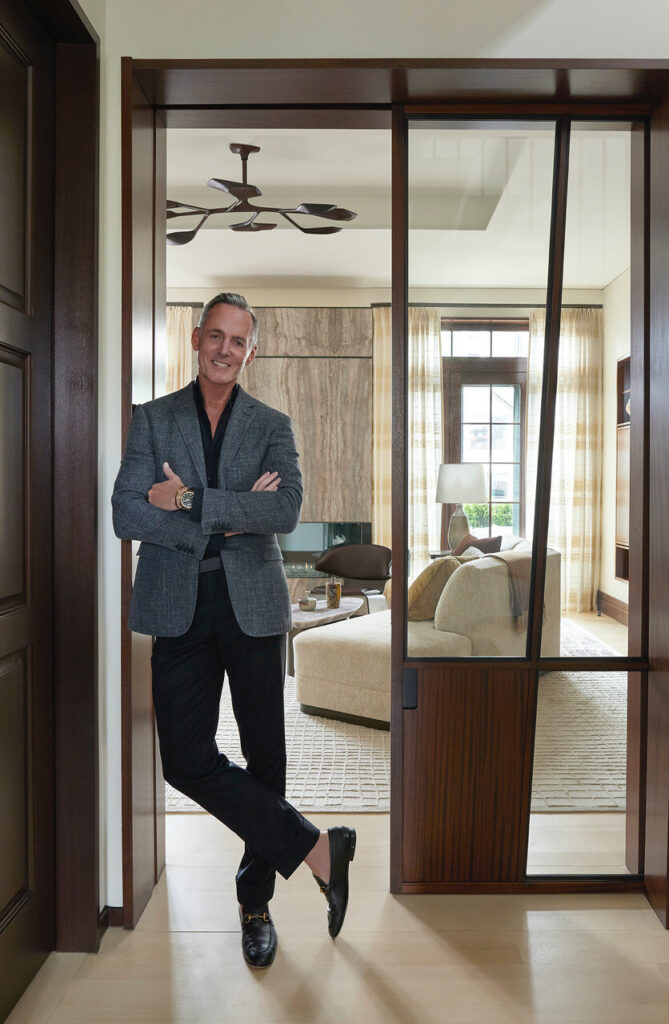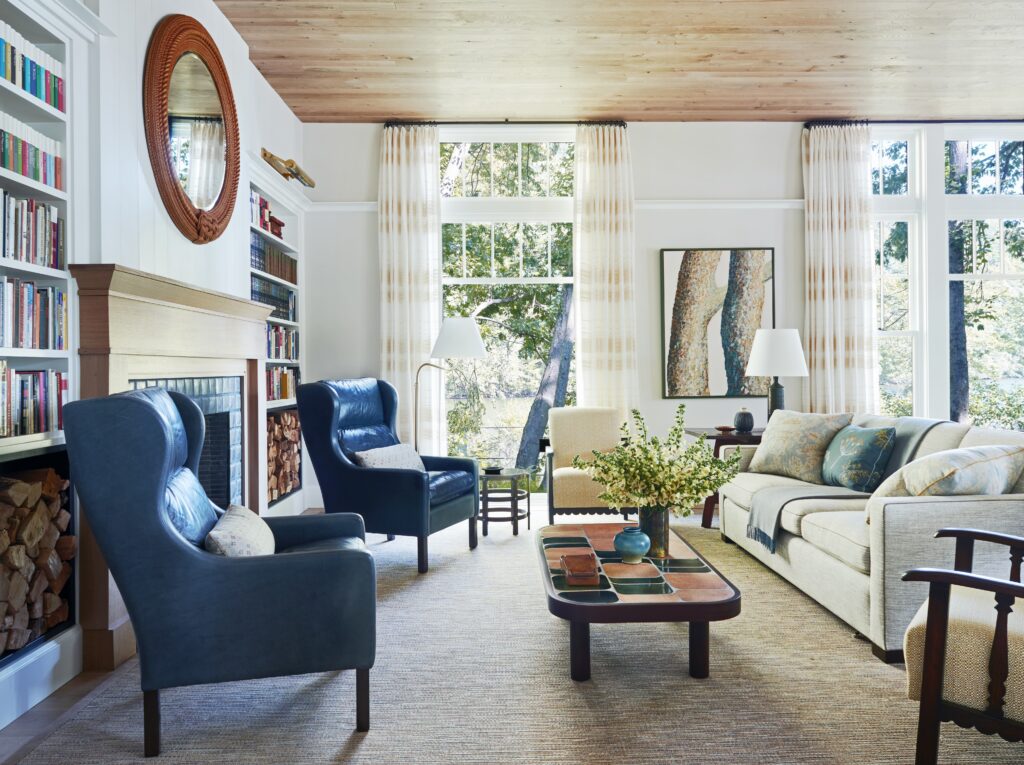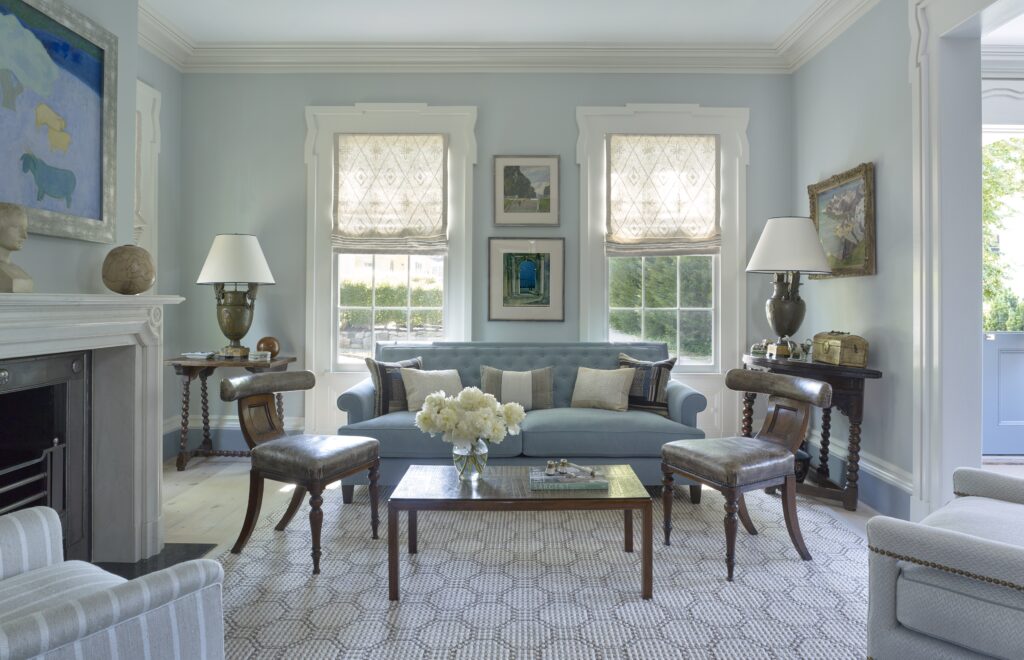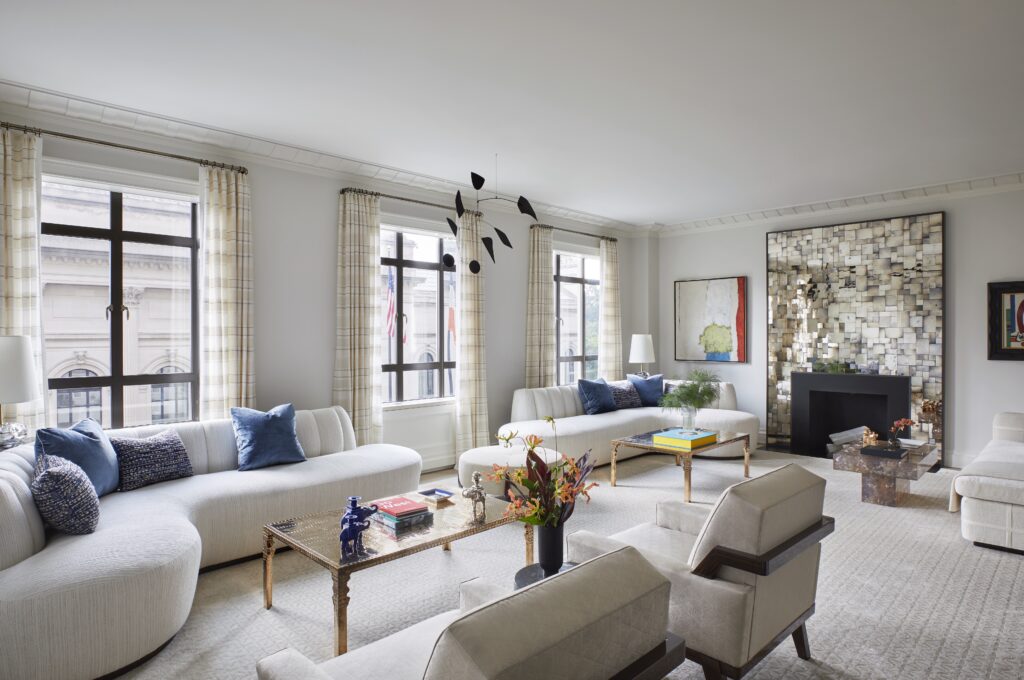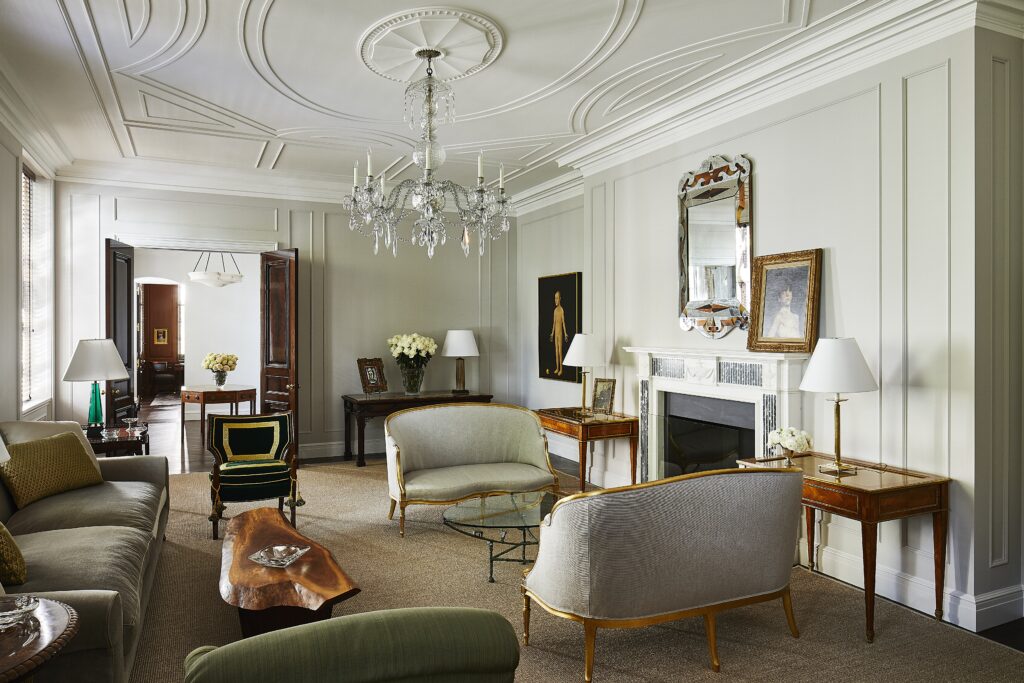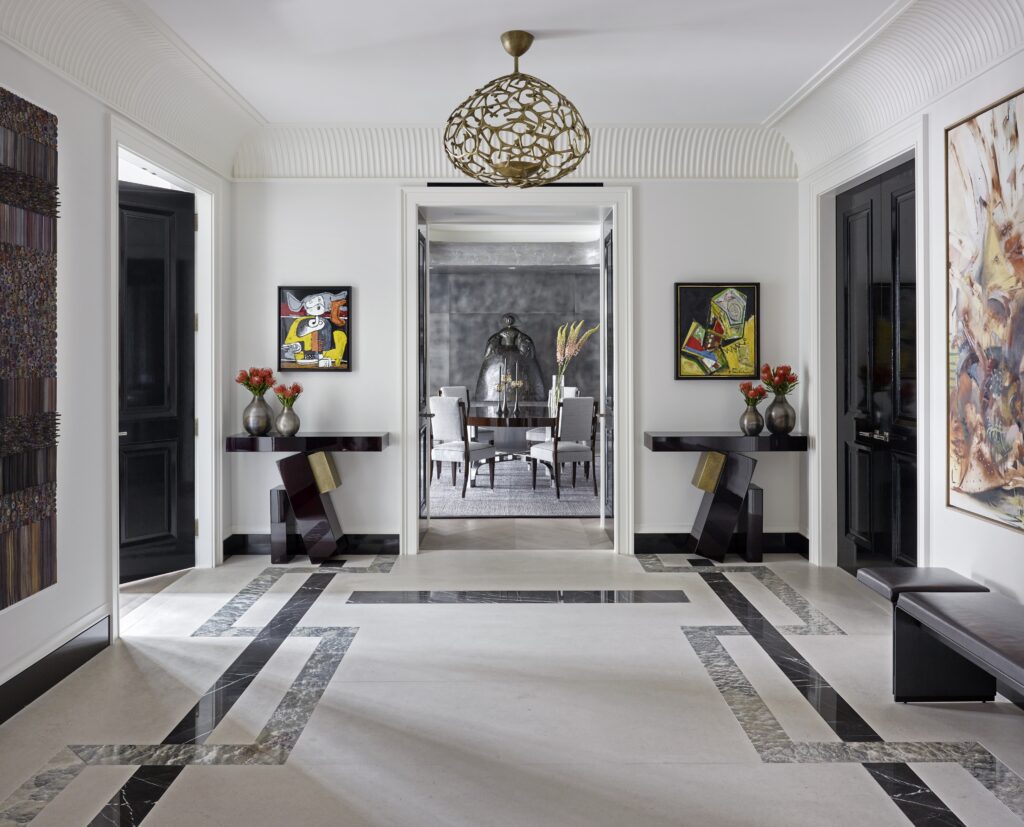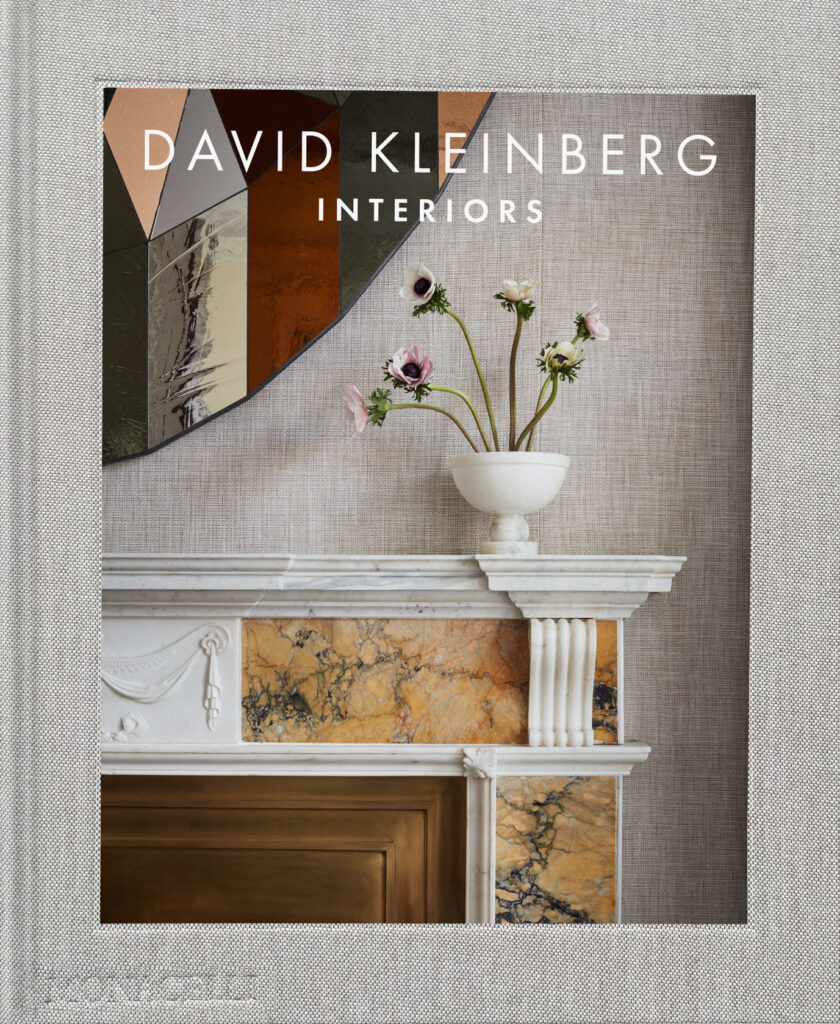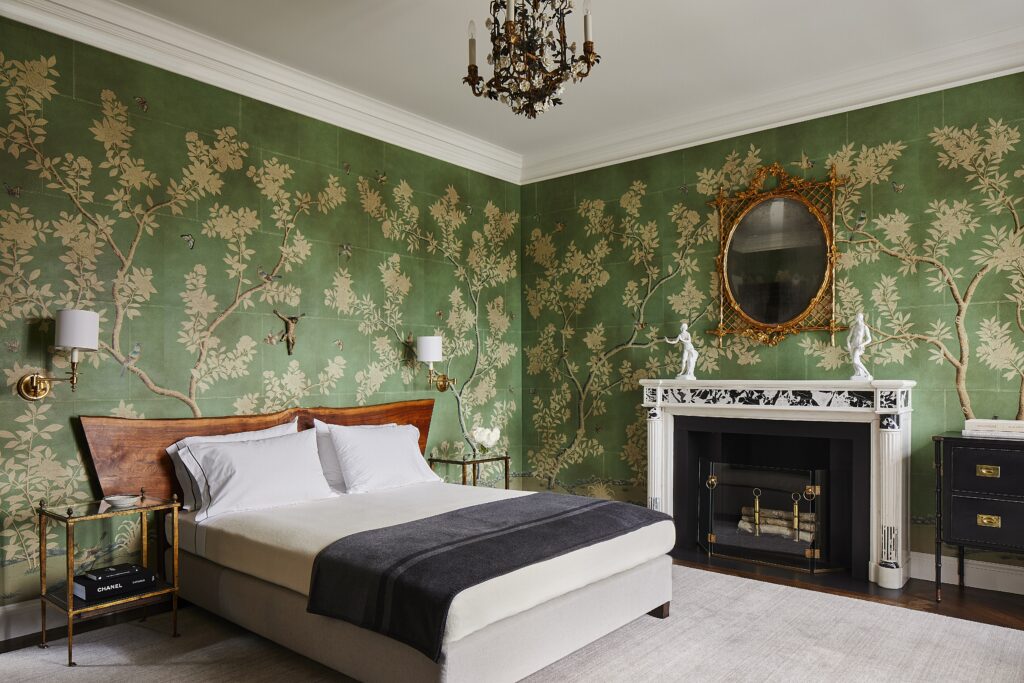
“It is difficult if nigh impossible to date David’s interiors – they exist out of time and space.” This is how fashion designer Thom Browne and Andrew Bolton, Curator in Charge of the Costume Institute at the Metropolitan Museum of Art describe David Kleinberg’s spaces. Their Manhattan historic townhouse interiors he created opens the new monograph of the NYC-based interior designer (published by Monacelli). ‘Timelessness,’ he told me when I hosted him last week in the series Interior Design: Then and Now, ‘is the opposite of trendiness,’ as he believes that interiors transcend time and become enduring cultural entities. Kleinberg was Browne’s first client when the fashion designer began making what would become his iconic suits. He promised that if he were ever to buy a house, Kleinberg would decorate it.
The new book allows the reader to walk into this classic Manhattan house, designed in the 1920s by American architect Mott Schmidt, who made his name with Georgian Revival, and particularly with the townhouses he created in the Sutton Place neighborhood in Manhattan. Here, Kleinberg devised a ‘pristine’ interior scheme, mirroring Browne’s American classical roots, which blends seamlessly within its architecture and geographical contexts. “For David,” Browne and Bolton announce, “how a room is ‘lived in’ is just as important as how it is ‘looked at,’ not unlike a couturier who is constantly negotiating the formal and functional elements of dress.” Blending American and English antiques with pieces by George Nakashima, Claude Lalanne, and mid-century Nordic design, the symphony could not be more harmonious, balanced, or beautiful. The black-and-white kitchen with tiled wall is particularly powerful, and pays homage to the great American houses. The bar stools, the only pieces of furniture in the kitchen, were recreated after those at the neighboring Four Seasons Restaurant, admired by both the client and the decorator.
In his introduction to the monograph, Mayer Rus, the West Coast editor of Architectural Digest, calls Kleinberg an ‘American Designer.’ His sixteen-year tenure at the influential interior decorating team of Parish-Hadley Associates before opening his own practice in 1997 was certainly the foundation, and was, in his words, the ultimate ‘dream job.’ Hadley was credited for cementing the ultimate expression of American interior décor, and famously worked with Jacqueline Kennedy in decorating the White House as well as John and Jacqueline Kennedy’s personal homes. Kleinberg becomes emotional when we started talking about the late decorator. ‘Hadley,’ he says, ‘means everything to me.’ From him he learned not only how to make beautiful spaces, but also to make them ‘work.’ During his time with Parish-Hadley, he mastered the history of decorative arts, learning from dealers across the globe how to look at furniture. With this vast store of knowledge, he was ready to open his own practice. In the last two decades, Kleinberg has been consistently ranked as one of America’s top interior designers. The monograph includes eleven recent projects in Manhattan, Aspen, Palm Beach, and the Hamptons – urban, rural, coastal, mountains – offering insight into the process of creating a variety of celebrated interiors. Kleinberg loves the challenge posed by his various projects—architecture, geographic locations, and climates.
The Washington D.C. penthouse he created for late philanthropist and arts patron Michelle Smith was widely publicized when her exquisite design collection, titled ‘A Vision,’ was successfully auctioned by Sotheby’s in the spring of 2021. Here, the two worked together on assembling one of the most celebrated collections of French mid-century design in recent memory, including exceptional work by Les Lalanne, Alberto and Diego Giacometti, Maria Pergay, Jean-Michel Frank, and Lucie Rie, which Kleinberg brilliantly installed in a series of curated spaces. What made this project particularly relevant was that it exemplifies the potential of iconic objects of the past to elevate the contemporary interior, and to imbue it with a new and fresh narrative.
Smith, who was interested in bringing the best design, but not fine art, to her home, was the dream client and her taste came to shape the direction of the interior scheme. ‘My interest,’ Kleinberg says, ‘is in creating coherent projects – homes that tell a complete story,’ and the story of this home which has since been dismantled was of passion for objects; even the walls, on which three dimensional objects were placed, such as a tapestry by Olga de Amaral as well as site-specific installations by Edmund de Waal.
Unlike Smith’s interiors where Kleinberg was involved with the acquisition of every piece, the Egyptian Revival Victorian house in Sag Harbor featured in the book presented the opposite situation. The frequent client for whom he created six houses in the past asked to use furniture he owned and not to buy new. Here, Kleinberg faced the challenge of selecting the pieces from three former houses the client owned in the past, and put them together while creating a new narrative, offering the client the opportunity to live in a fresh new home, yet with familiar furniture.
Kleinberg chose to conclude the new and handsome monograph with a special tour of his private garden in East Hampton. His inspiration came from Dan Kiley, the legendary American landscape architect who devised an architectural style when creating geometrical landscapes, including the Gateway Arch National Park in St Louis and the famed garden of Eero Saarinen’s Miller House in Columbus, Indiana. He has been a hero for decades, and from Kiley, Kleinberg learned to create his own monochromatic, minimalist garden filled with textures and structures, based on perennial plants, the first time he created a garden. Today, ten years after starting from scratch, the garden ‘is still a work in progress,’ he says, a source of enjoyment, where he spends long weekends away from Manhattan. The garden, no less elegant, holistic, curated, and more sophisticated than the interiors he creates for others, is his to marvel.
